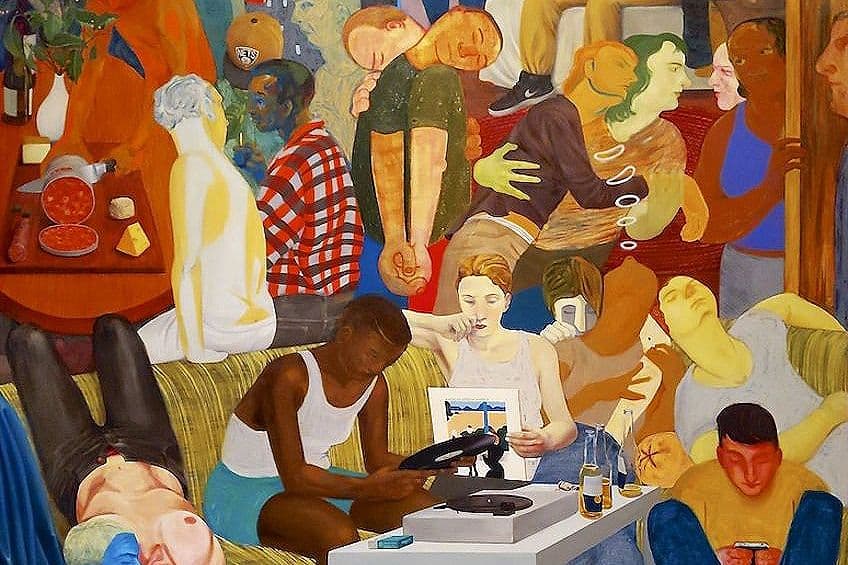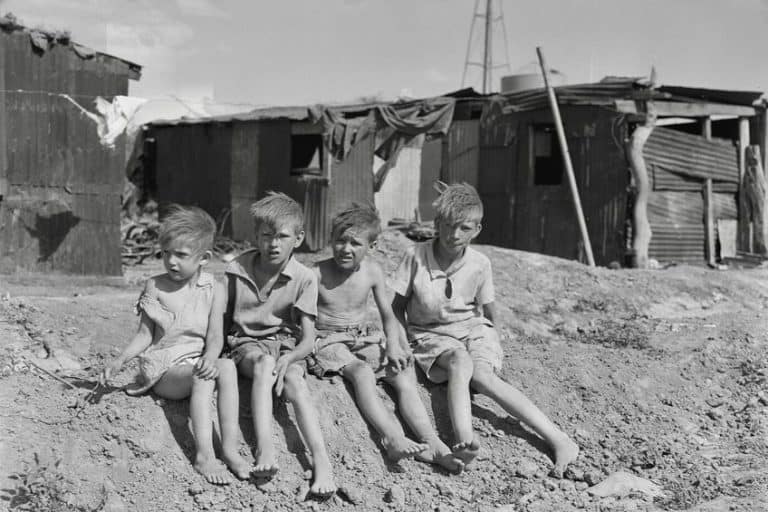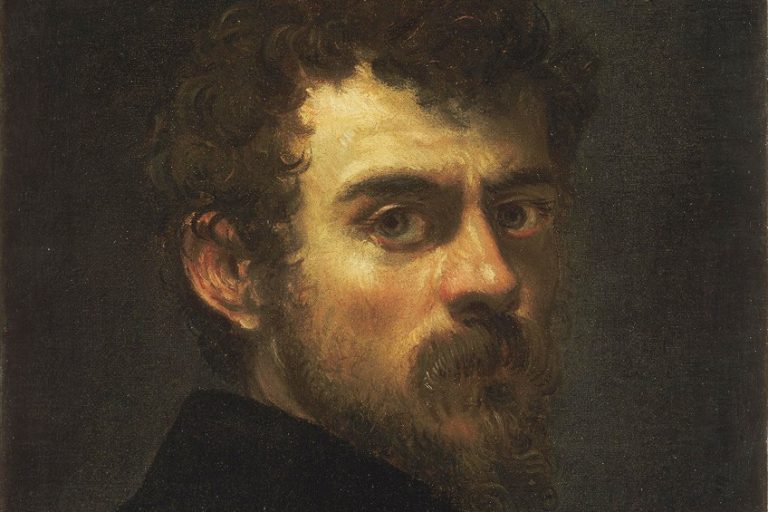Nicole Eisenman – A Master of Sculpture, Painting, and Drawing
Nicole Eisenman is a contemporary American artist known for her dynamic and provocative works that span painting, drawing, and printmaking. Born in 1965 in France, Eisenman grew up in New York City, where she developed a distinctive style characterized by a bold, often satirical commentary on social and political issues. Her work combines elements of art history, pop culture, and personal narrative, creating a rich, multi-layered visual language that challenges traditional notions of gender, identity, and power. Eisenman’s art is celebrated for its emotional depth, technical mastery, and ability to blend humor with serious critique, making her a significant and influential figure in the contemporary art world.
Key Takeaways
- Nicole Eisenman is a prominent French-born American artist.
- Her work addresses social and political themes with humor and criticism.
- Significant achievements include the Guggenheim Fellowship and the Carnegie Prize.
Artistic Career and Achievements
| Birth | 1965 |
|---|---|
| Death | Present |
| Place of Birth | Verdun, France |
| Genre of Work | Painting, sculpture, and drawing |
Nicole Eisenman, a French-born American artist, is one of the leading figures in contemporary art. Known for her oil paintings and sculptures, Eisenman’s work often delves into complex social and political themes with a unique blend of humor and criticism. Her inventive approach has made her one of the most celebrated artists in the U.S. today.
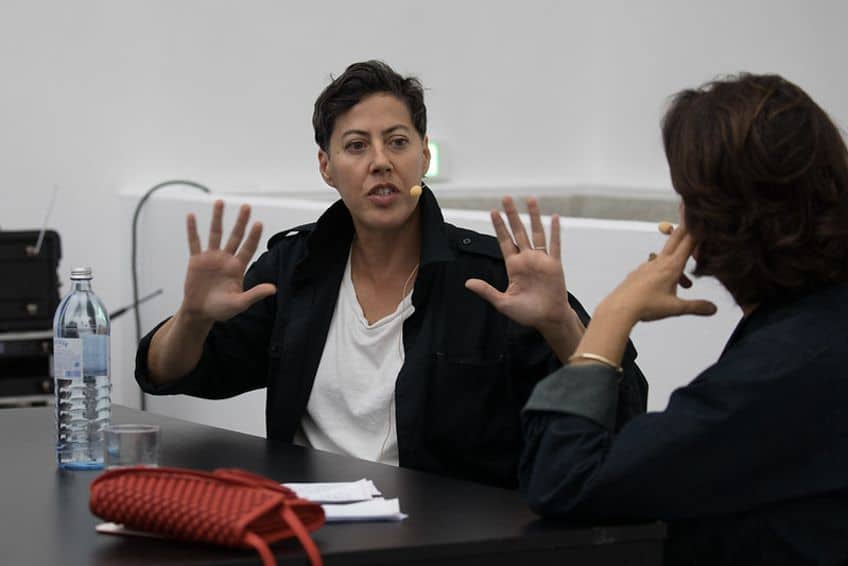
Eisenman’s career is distinguished by numerous achievements, including the Guggenheim Fellowship and the Carnegie Prize. She has been featured multiple times in the Whitney Biennial, highlighting her influence and continuous relevance in the art world. Her pieces are renowned for their bold exploration of gender, identity, and societal issues. A major retrospective of her work, showcased at the Whitechapel Gallery, presents an opportunity to appreciate the depth and breadth of her artistic journey. Through her critical and humorous lens, Eisenman invites viewers to confront and reflect upon the intricacies of contemporary life.
Education and Early Work
Nicole Eisenman was born in Verdun, France, in 1965 and later moved to the United States to study at the Rhode Island School of Design, where she graduated in 1987. During her early career, Eisenman developed her signature style incorporating both figurative and abstract elements.
She quickly gained attention for her unique approach to painting, which often explores themes of identity and queerness.
Influential Exhibitions
Eisenman has been featured in several notable exhibitions, beginning with her significant inclusion in the Whitney Biennials of 1995, 2012, and 2019. Her work has also been showcased at the Hauser & Wirth gallery, highlighting both her paintings and sculptures. One of her major exhibitions, a solo show at Hauser & Wirth in Paris, featured her new works until September 2021. Eisenman’s participation in these exhibitions has solidified her position as a critical voice in contemporary art.

Awards and Honors
Throughout her career, Eisenman has received multiple high-profile awards, underscoring her impact on the art world. She was awarded the Guggenheim Fellowship in 1996 and later the Carnegie Prize in 2013 for her outstanding achievements in art. In recognition of her continuous contributions, she was named a MacArthur Foundation Fellow in 2015.
Additionally, she holds membership in the American Academy of Arts and Letters, further highlighting her esteemed position among American artists.
Themes and Techniques
Nicole Eisenman’s work blends figurative painting with cartoonish characterizations, addressing issues of identity, gender, and social inequalities. Through oil paintings and sculptures, she creates vivid narratives filled with humor and poignancy.
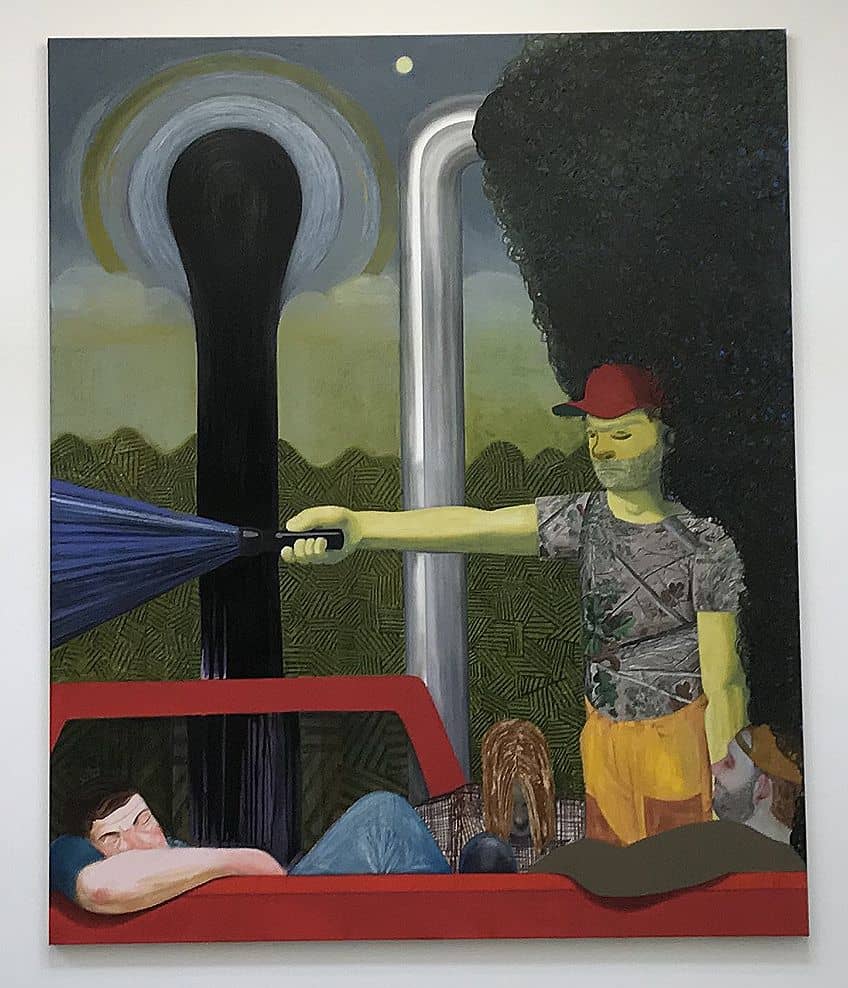
Stylistic Evolution and Abstraction
Eisenman’s artistic journey reveals a blend of figurative and abstract elements. Early works often depicted clear narrative scenes, while recent pieces show a more abstract approach. This evolution highlights her flexibility and willingness to experiment. Incorporation of abstraction allows for complex storytelling, offering viewers multiple interpretations. Her oily stroke techniques add depth and texture, enhancing the sensory experience of her work.
She consistently intertwines figurative painting with modern abstract forms.
The Human Form and Gender Representation
Central to Eisenman’s art is the varied representation of the human form. She challenges traditional gender norms by depicting androgynous figures and exploring the fluidity of gender. Her characters often break away from conventional beauty standards, showcasing a more authentic human experience. Gender representation becomes a focal point, questioning societal norms surrounding identity and sexuality. Her oil paintings frequently portray cartoon characters in sexually explicit situations, forcing viewers to reconsider preconceived notions about the body and desire.
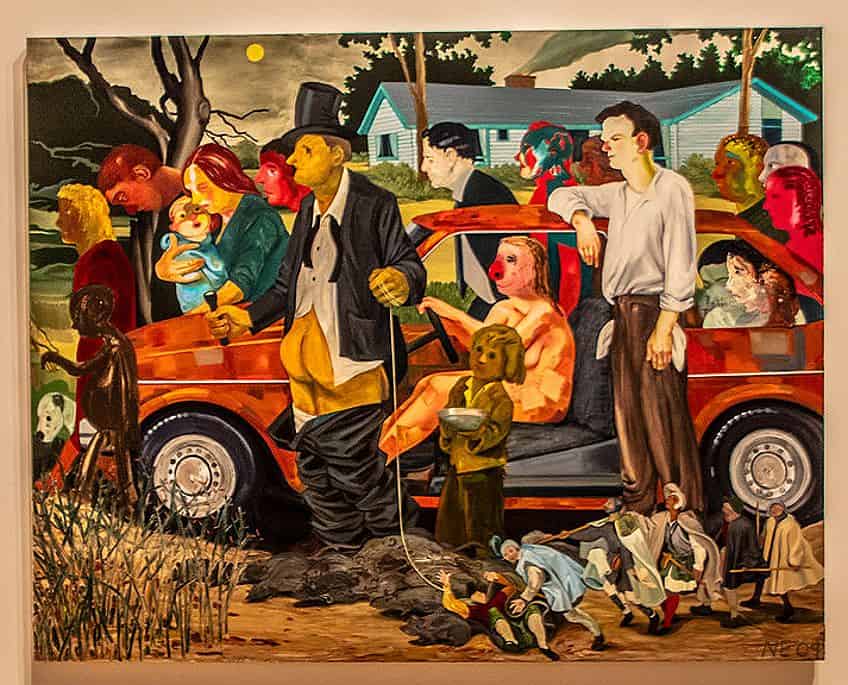
Humor and Power in Art
Eisenman skillfully uses humor to address power dynamics and societal issues. Her use of cartoonish distortions—exaggerated hands, feet, and noses—adds a layer of satirical critique. This approach makes serious topics more approachable. The tragicomic quality of her work allows her to tackle political and social themes without diminishing their importance.
By infusing humor with poignant storytelling, she draws in her audience, prompting reflection on deeper social commentaries woven into the narratives.
Cultural and Social Impact
Nicole Eisenman’s work has a profound cultural and social impact, deeply engaging with community dynamics and representation in modern art spaces. Through her art, she addresses contemporary social issues and amplifies underrepresented voices.
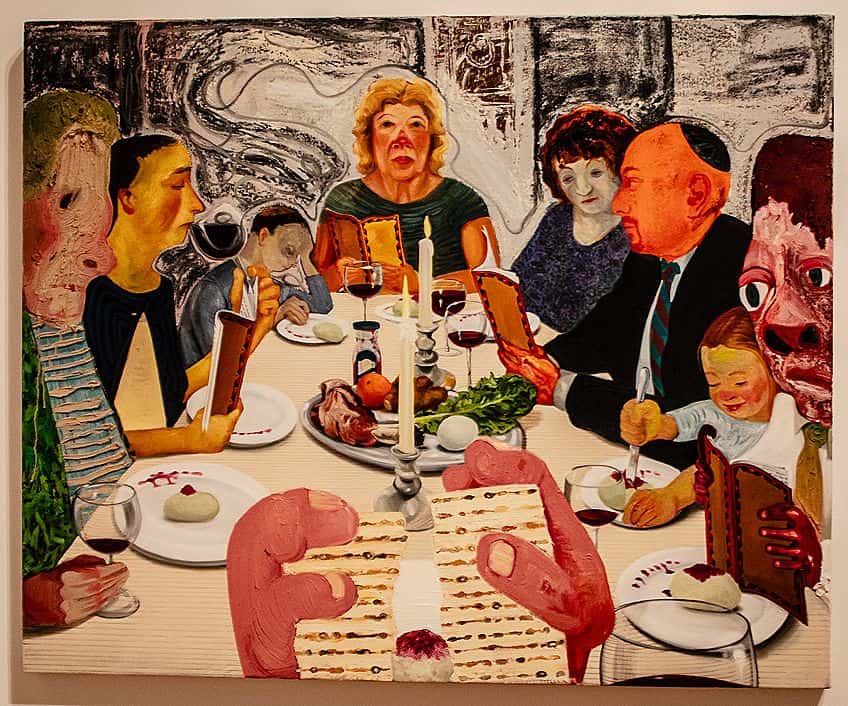
Art and Community Engagement
Eisenman leverages her art to create a communal dialogue. Her exhibitions at venues like the Hauser & Wirth and New Museum often feature works that challenge societal norms and provoke thought. She received the MacArthur Foundation Fellowship for her contributions to expanding the expressive potential of figurative art, which underscores her role in fostering community awareness and engagement. By addressing themes like politics and activism, she connects her visual narratives to broader social movements.
In Brooklyn, where she lives and works, Eisenman participates actively in the local art scene, further promoting community engagement. Her works like “The Triumph of Poverty” reflect her commitment to issues such as economic disparity and social justice, creating a resonant impact within and beyond the art world.
Representation in Modern Art Spaces
Eisenman’s art is prominently displayed in key art institutions such as the Museum of Modern Art, Whitechapel Gallery, and Vielmetter Los Angeles. These platforms enable her to present diverse narratives that challenge conventional representations. Her emotionally charged narrative paintings often feature humor and irony, serving as a cultural commentary on contemporary life. This approach restores cultural significance to figurative painting, making her a pivotal figure in modern art. Eisenman’s work at venues like the New Museum and Hauser & Wirth highlights the importance of diverse representation in art spaces. By pushing boundaries and breaking norms, she inspires both artists and viewers to rethink cultural and social paradigms.
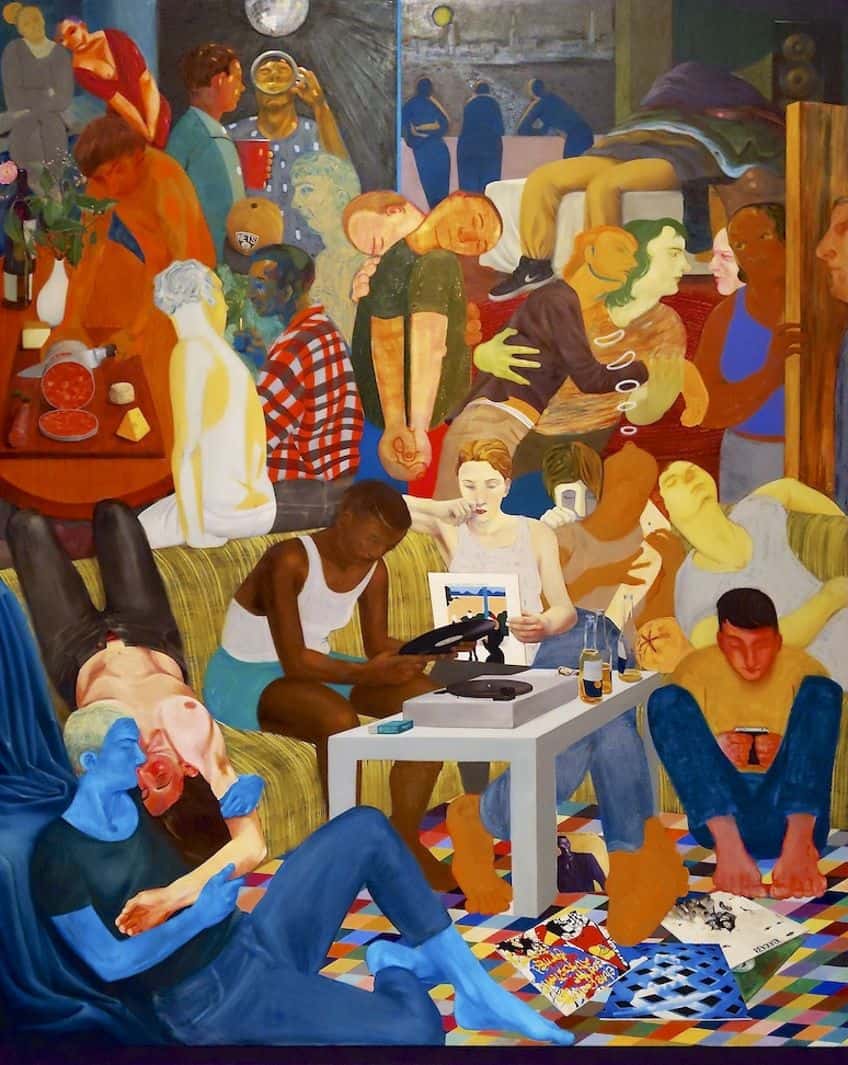
Selected Works and Exhibitions
Nicole Eisenman has made significant contributions to contemporary art through her diverse range of paintings, sculptures, and installations. Her work has garnered international recognition and is featured in prominent collections around the world. Nicole Eisenman’s artistic portfolio exhibits a broad spectrum of styles and themes. Among her notable paintings, Guy Capitalist (2011) stands out for its critical reflection on socioeconomic themes. Eisenman’s large-scale murals and installations, such as those displayed at the Whitney Biennial and the Venice Biennale, showcase her versatility in handling different mediums.
At Skulptur Projekte Münster in 2017, Eisenman presented works that integrated sculpture and public space, further establishing her as a visionary artist. Her installations often combine humor and social commentary, effectively engaging viewers in contemporary issues.
International Recognition and Collections
Eisenman’s work has been celebrated across the globe. She received the prestigious MacArthur Foundation Fellowship in 2015, underscoring her impact on the art world. Her pieces are held in esteemed collections, including The Contemporary Austin, Tate, Astrup Fearnley Museet, and the San Francisco Museum of Modern Art.

In addition to prominent solo exhibitions like Heads, Kisses, Battles at Kunsthalle Zurich, Eisenman has been featured at renowned institutions such as the Secession in Vienna. Her international presence affirms her status as a key figure in contemporary art, with works appreciated for their complexity and cultural significance.
Nicole Eisenman has established herself as a vital force in contemporary art through her innovative and incisive works. Her ability to seamlessly merge historical references with contemporary issues, all while maintaining a deeply personal and accessible style, has garnered widespread acclaim. Eisenman’s art challenges viewers to reconsider their perspectives on identity, society, and the human condition, ensuring her lasting impact on the art world. As her career continues to evolve, Eisenman’s contributions promise to inspire and provoke thought for generations to come, cementing her legacy as a transformative and influential artist.
Frequently Asked Questions
What Are Some Notable Exhibitions of Nicole Eisenman’s Work?
Nicole Eisenman has been featured in numerous prestigious exhibitions across the globe. A solo show of new paintings and sculptures was exhibited at Hauser & Wirth, Paris until September 21. Her work, titled Nicole Eisenman: Al-ugh-ories, was displayed at the New Museum in Manhattan. Additionally, another exhibit was hosted at Anton Kern Gallery.
How Has Nicole Eisenman Contributed to Contemporary Art?
Nicole Eisenman has significantly impacted contemporary art by utilizing a vast range of media and materials. Her work is known for its inventive narratives and exploration of modern societal issues. She blends past, present, and future elements, creating a unique style that challenges traditional boundaries and encourages dialogue about contemporary experiences.
What Are the Themes Often Explored in Nicole Eisenman’s Paintings?
Eisenman’s paintings and sculptures often depict people with exaggerated features in tragicomic situations. Common themes include social and political satire, existential struggles, and collective human experiences. Her work frequently combines humor with critical commentary, making profound statements about life and society through her distinctive, cartoonish aesthetic.
What Accolades or Awards Has Nicole Eisenman Received for Her Artwork?
Nicole Eisenman has earned several prestigious awards for her work. She received the Guggenheim Fellowship in 1996. Her acclaim in the art community also includes other recognitions and invitations to exhibit at renowned institutions, solidifying her status as an influential figure in contemporary art.
Isabella studied at the University of Cape Town in South Africa and graduated with a Bachelor of Arts majoring in English Literature & Language and Psychology. Throughout her undergraduate years, she took Art History as an additional subject and absolutely loved it. Building on from her art history knowledge that began in high school, art has always been a particular area of fascination for her. From learning about artworks previously unknown to her, or sharpening her existing understanding of specific works, the ability to continue learning within this interesting sphere excites her greatly.
Her focal points of interest in art history encompass profiling specific artists and art movements, as it is these areas where she is able to really dig deep into the rich narrative of the art world. Additionally, she particularly enjoys exploring the different artistic styles of the 20th century, as well as the important impact that female artists have had on the development of art history.
Learn more about Isabella Meyer and the Art in Context Team.
Cite this Article
Isabella, Meyer, “Nicole Eisenman – A Master of Sculpture, Painting, and Drawing.” Art in Context. July 28, 2024. URL: https://artincontext.org/nicole-eisenman/
Meyer, I. (2024, 28 July). Nicole Eisenman – A Master of Sculpture, Painting, and Drawing. Art in Context. https://artincontext.org/nicole-eisenman/
Meyer, Isabella. “Nicole Eisenman – A Master of Sculpture, Painting, and Drawing.” Art in Context, July 28, 2024. https://artincontext.org/nicole-eisenman/.


